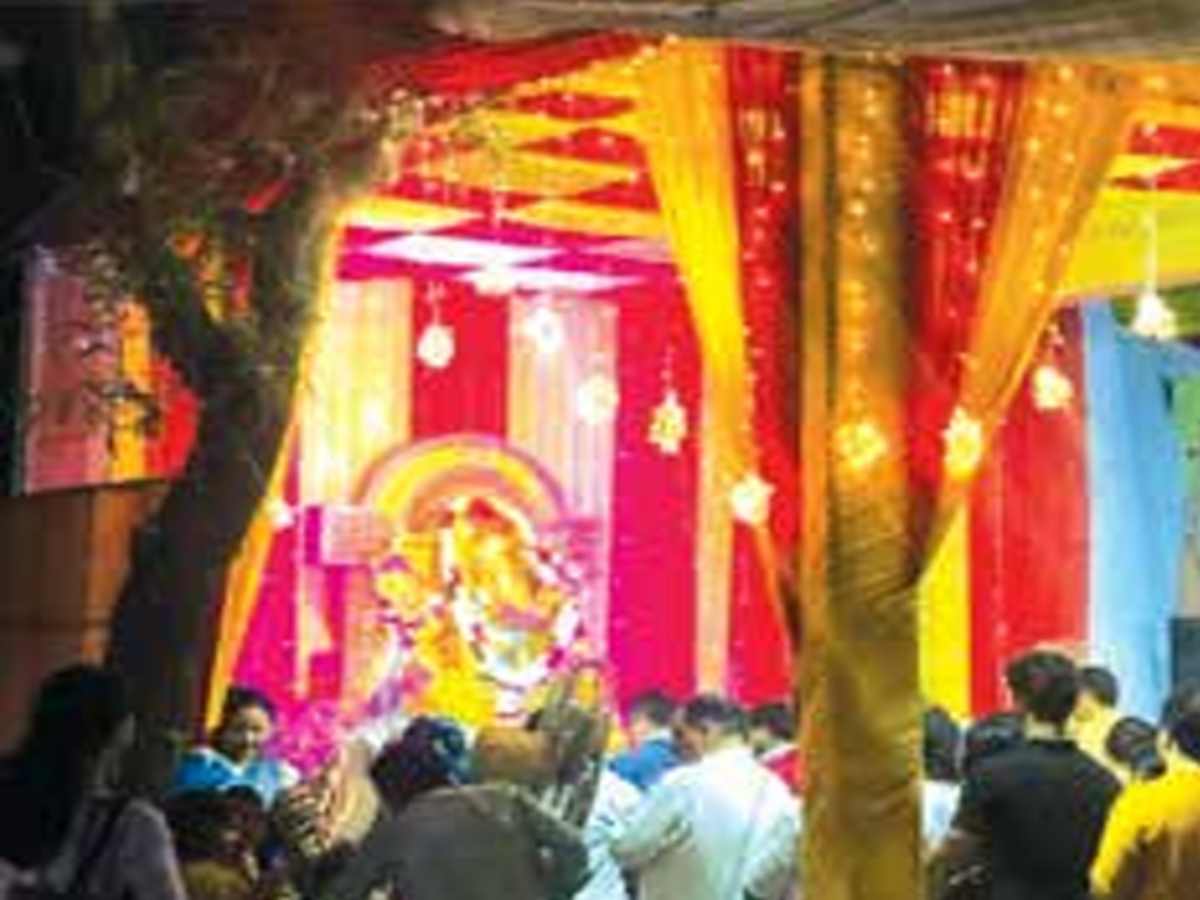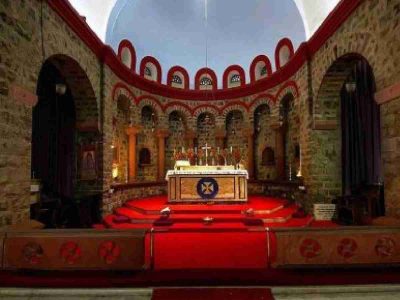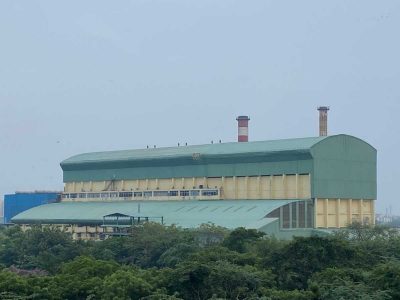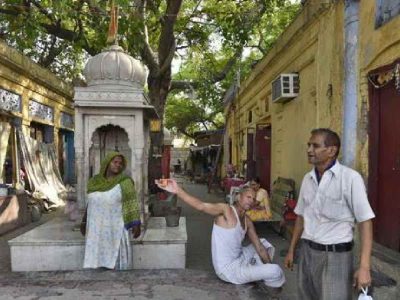Delhi: Far away from the hectic last-minute preparation for Ganeshotsav in Amchi Mumbai and Maharashtra, the mood is equally upbeat in Saddi Dilli for the annual Ganeshotsav starting September 5.
Nutan Marathi School, Paharganj, Chowgule Public School, Karol Bagh, and Delhi Haat INA are likely to attract thousands of devotees.
For the Marathi community, sending their children to the 1929-established Nutan Marathi School and Chowgule Public School is like an article of faith as well as connecting with their roots.
Former Union Ministers like YB Chavan, Vasant Sathe, Prithviraj Chavan, and former Lok Sabha Speaker Sumitra Mahajan have been part of Ganeshotsav celebrations here.
The local Marathi community considers Prithviraj Chavan as their own, as he had his schooling at Nutan Marathi School.
“The best thing about Nutan Marathi School and Chowgule Public School is that the majority of their students are non Marathi. However, every student there studies Marathi. I remember that the towering Maharashtra leader, YB Chavan, was very much involved with these schools. Now, (current Deputy CM of Maharashtra) Devendra Fadnavis takes a lot of interest in the activities of these premier institutions,” says PL Sharma, who studied at Nutan Marathi School in the 1960s.
“After YB Chavan became Union Minister in 1962, Ganeshotsav began to be organised on a large scale in the capital. He himself would motivate the local Marathis to stay connected to their traditions,” says acclaimed cartoonist and Marathi-Hindi writer Madhav Joshi, who belongs to an old Marathi family in Delhi.
First community outfit in city
In 1919, Marathis in Delhi formed their first organisation, the Maharashtra Sneha Sanvardhak Samaj. Marathi families living around Lahori Gate were associated with it, and they started Ganeshotsav at Nutan Marathi School. They were all in the Railways.
Once Delhi became the capital of the country, dozens of Marathi families from the Bombay Presidency came to work in Central Government offices. Many of them settled in Karol Bagh. It was through the efforts of these Marathi families that Chowgule Public School was established in 1957 at Faiz Road in Karol Bagh.
Marathi is mandatory up to the eighth grade in both of these schools.
Marathi’s love for Karol Bagh
In 1950, Dattatray Mahadev Joshi opened the Bombay Store in Karol Bagh. Until a few years ago, all the Marathis of Delhi would come here to buy Marathi spices, Marathi newspapers, magazines, etc.
The Bombay Store is now closed. The reason is that many Marathi families of Karol Bagh have moved to other parts of the capital and NCR.
“The Delhification of nearly four lakh Marathis in Delhi-NCR has also been completed to a large extent. Now they love to eat Rajma Chawal and Chole Kulche along with Marathi delicacies like Puran Poli and Shrikhand,” says Gurugram-based entrepreneur Virendra Upadhye, who is from the Konkan region and a very active member of the local Marathi community.
Also read: Delhi: Government neglect and overcrowding worsen cattle crisis
Sculptural legacy
While talking about the Marathis of Delhi, one cannot ignore Ganesh Bhikaji Deolalikar and Ram Sutar.
Deolalikar designed the Supreme Court building. He was the Chief Architect of the Central Public Works Department (CPWD) and was also the first Indian head of CPWD.
Among the most famous Marathis in Delhi-NCR are sculptors Ram Sutar and his son, Anil Sutar. They have been living in the capital for decades. The tallest statue of Sardar Patel in the world, also known as the Statue of Unity, was built under the supervision of Ram Sutar.
Ram Sutar has designed many important statues in the capital. The famous statue of Mahatma Gandhi in Parliament House was also designed by him.
“My father, Ram Sutar, came to Delhi in the late 1950s from Dhule district of Maharashtra. After briefly working here in the government, he quit his job in the early 1960s in order to work as a freelancer. He made statues of dozens of historical figures and mythical characters,” informs Anil Sutar, who is himself a noted sculptor.
Interfaith harmony
Ezekiel Isaac Malekar is a proud Marathi. Ezekiel speaks Hindi, Marathi, English, and Hebrew fluently. He is the Rabbi (priest) of the Judah Hyam Synagogue, a Jewish place of worship located on Prithviraj Road. Mohammed Rafi is his favourite singer. He keeps humming the song “O Duniya Ke Rakhwale, Sun Dard Bhare Mere Nale” from the movie Baiju Bawra, sung by Rafi Sahab. “I have been reciting Jewish prayers in the interfaith prayer meetings held at Rajghat and Gandhi Darshan for almost thirty years,” informs Malekar, adding, “Only a great soul like Gandhiji could have given the idea of interfaith prayers. He was a saint.”
Malekar is originally from Pune. He says that his mother tongue is Marathi. He is happiest when speaking Marathi. Having lived in Delhi for a long time, he now feels like it’s his own. He can’t leave it under any circumstances.
Notable statues
Apart from the two Marathi schools, you can find many symbols of Maharashtra in the capital. While Chhatrapati Shivaji Maharaj is revered by the entire country, his relationship with Maharashtra is unique. Chhatrapati Shivaji Maharaj not only fought against the invaders but also instilled in the minds of the people the belief that their own kingdom was possible. He never came to Delhi, but his presence is felt here in various places.
On the road that goes from Connaught Place towards Minto Road, a life-size statue of Chhatrapati Shivaji Maharaj was erected in 1972. This life-size statue was created by the renowned sculptor Sadashiv Rao Sathe from Mumbai. In the same year, the Hardinge Stadium was renamed Shivaji Stadium. Around the same time, the name of Minto Bridge was also changed to Shivaji Bridge, but it is still known by its old name.
“Sadashiv Rao Sathe also designed the 12-foot-high statue of Lokmanya Bal Gangadhar Tilak on the busiest crossroads of the capital, Tilak Bridge. Looking at it closely, it seems as if Lokmanya Tilak is keeping a sharp eye on the capital. This statue looks very lively,” says Madhav Joshi.
Also read: Delhi: Months after GTB shooting, hospitals remain vulnerable to violence
Almost three years after Mahatma Gandhi’s martyrdom, the government entrusted Sadashiv Rao Sathe with the task of creating a life-size statue of the Father of the Nation. This statue was to be installed outside the Town Hall in Chandni Chowk. Then only 28 years old, Sathe had not done any noteworthy work. He took this as a challenge and proved his creativity by creating an unparalleled statue of Gandhi. This statue was installed in 1952. This is probably the first life-size statue of Gandhi in the country or the capital. In this statue, there is a wonderful blend of emotion and motion. It is worth stopping by for a few moments.
A statue of Chhatrapati Shivaji Maharaj was installed in Parliament House on April 28, 2003. A bust is also installed in Shivaji College. Shivaji College was established in 1961 thanks to the efforts of Punjab Rao Deshmukh, a senior leader from Maharashtra.
Sant Namdev unites both Punjabis dominating Delhi and Maharashtra.
“Sant Namdev was a poet saint from Maharashtra. He spent a lot of time in Punjab. Some of his hymns are in the Guru Granth Sahib. We established a library in his name in Paharganj. There is also a temple of Sant Namdev in Lodhi Colony,” informs Dr Harmeet Singh, poet and ex-principal of Khalsa College.
Finally, it is still not clear whether this year’s Ganeshotsav will be celebrated at Delhi Haat, as it is booked during the festive time by the National Institute for Fashion Technology (NIFT) for their important event.
Many Marathis in the capital have reached out to leaders like Devendra Fadnavis and Sharad Pawar, seeking help in hosting Ganeshotsav at Delhi Haat, which is the premier Ganesh Puja in the capital. If Ganeshotsav is not held at Delhi Haat, Delhiites would be deprived of mouth watering Shrikhand.





